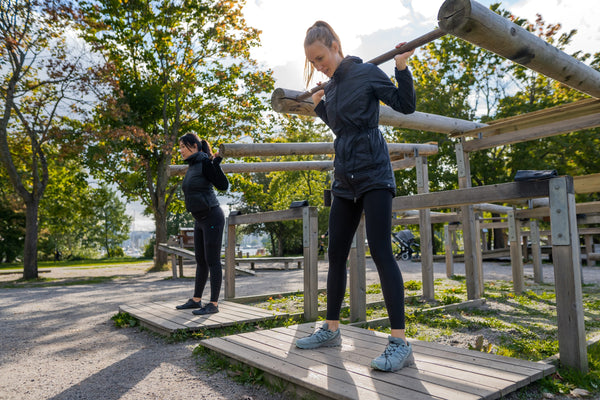Did you know you can make activewear from wood? In fact, you can make clothing fabric from lots of different raw materials, some of the most common ones being crude oil for synthetics or cotton.
At Tripulse, we are passionate about finding unique raw materials that are as eco- and health-friendly as possible, while being extremely functional and perfect for physical activity.
That’s why we chose Lenzing’s TENCEL™ Lyocell fibers for our very first activewear collection. Not only do they have great performance, durability, and amazing softness, but they’re free from harmful chemicals and plastics. Our supply chain, from sourcing raw materials to delivery, is Climate Neutral Certified and environmentally safe. This is thanks to using wood from sustainable sources, a clean production process, no harmful microplastics and toxins and investing into projects that support our planet and natural habitats.
But what are TENCEL™ Lyocell fibers, and what makes them so revolutionary for the textile industry? In this post we’ll share with you the specific benefits these fibers offer, along with the environmentally safe materials it’s made of.

FROM FOREST TO FABRIC PRODUCTION
More and more people are asking for environmentally-friendly clothing, and it’s exciting to meet the demand with ordinary raw materials undergoing innovative production processes. Wood has been the source of many human inventions because of its botanical origin, strength and versatility. It’s only time we start to manufacture it into our textiles on a larger scale.
The process of turning wood into durable, high-performance activewear starts in the forest. The wood pulp comes from sustainably managed forests, including eucalyptus, pine, spruce and birch trees. The wood is certified according to recognized sustainability criteria, such as the FSC® and PEFC™ standards. (1)
After the wood is sourced, it undergoes a transformation process into cellulosic fibers. Natural materials have been turned into fabric in the textile industry throughout history, such as viscose, a fabric created from wood pulp. The problem today with turning these cellulose fibers into fabric is that they’ve used a linear open production process using harmful chemicals (2), e.g. carbon disulfide, which is a neurotoxin, used to produce viscose (3). The majority of viscose is produced in just 3 countries, China, India and Indonesia, where untreated wastewater from its production contaminates the local environment. This also poses health risks for thousands in the local communities. (4)
TENCEL™ Lyocell fibers on the other hand use a closed loop production process and an organic solvent called N-methylmorphine-N-oxide, which is nontoxic and biodegradable. (5) This process saves 99% of the solvent used during the spinning process and recycles the water used as well, making it a very circular and almost zero-waste production process. (6) This makes the production process of TENCEL™ Lyocell fibers much better for our environment and helps protect it.

WHY WE USE TENCEL™ LYOCELL
Not only is the yarn created in a sustainable production process, the final fabric it’s created into has many performance benefits for activewear. Here are our top reasons for using TENCEL™ Lyocell fibers in the Tripulse activewear collection:
- Strength
- Breathability
- Smoothness & skin-friendliness
- Unfavorable for bacteria growth
- Color retention and sheen
- Certified safe
- Biodegradable
The textile industry is full of fantastic innovation. Wood is a multi-talented raw material with endless possibilities for better clothes. Designing long-lasting activewear should take into consideration human and environmental health. Our goal is to make activewear that has great quality, strength and functionality, while not compromising our natural world.
Sources:
https://www.lenzing.com/sustainability/external-recognition
https://www.commonobjective.co/article/cellulosic-fibres-and-preferred-cellulosics
https://www.cdc.gov/niosh/topics/carbon-disulfide/default.html
https://www.commonobjective.co/article/viscose-and-its-impact
https://www.sciencedirect.com/topics/engineering/lyocell-fiber
https://www.tencel.com/general
https://www.sciencedirect.com/topics/engineering/lyocell-fiber
https://www.tencel.com/general
https://www.tencel.com/sustainability
https://www.tencel.com/general
https://www.tencel.com/general
https://www.tencel.com/general
https://www.oeko-tex.com/en/our-standards/standard-100-by-oeko-tex
https://www.tencel.com/sustainability













